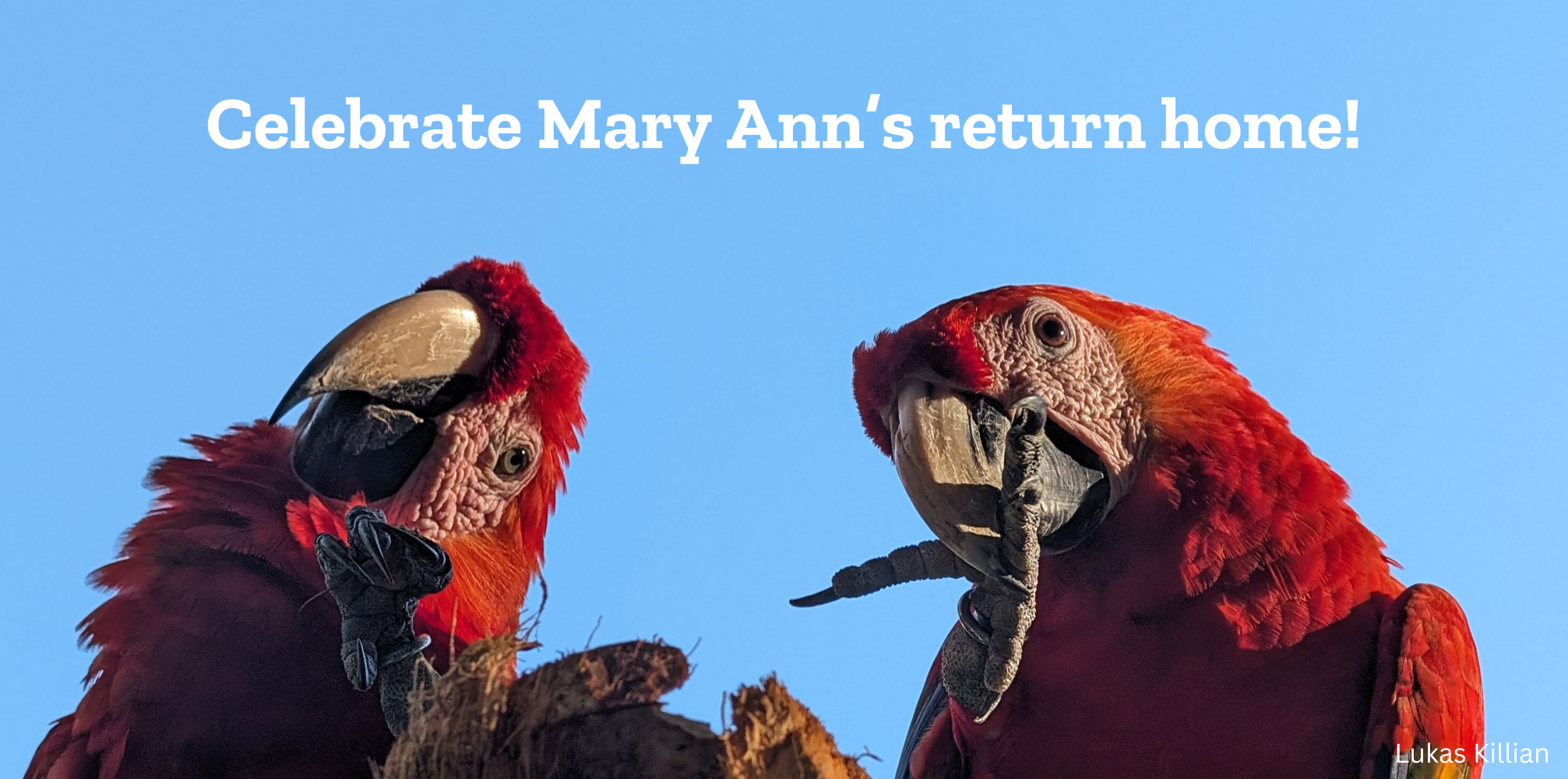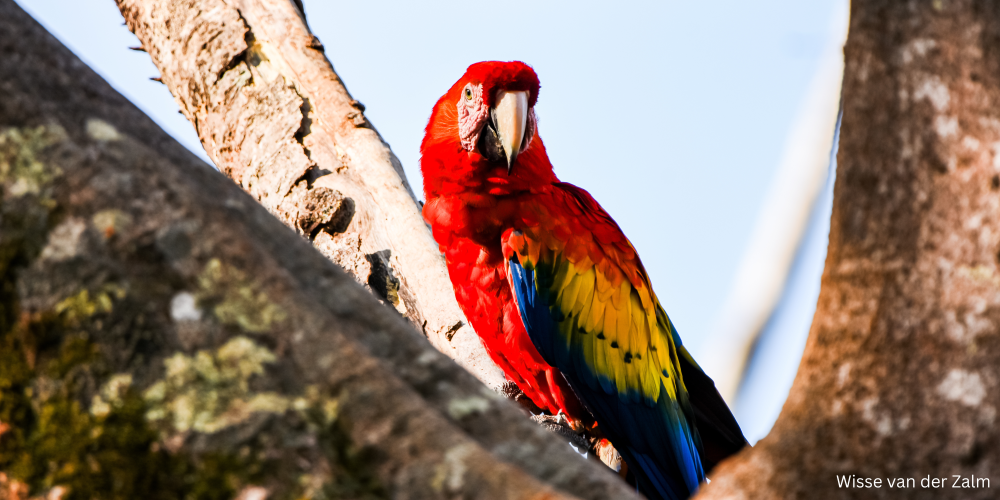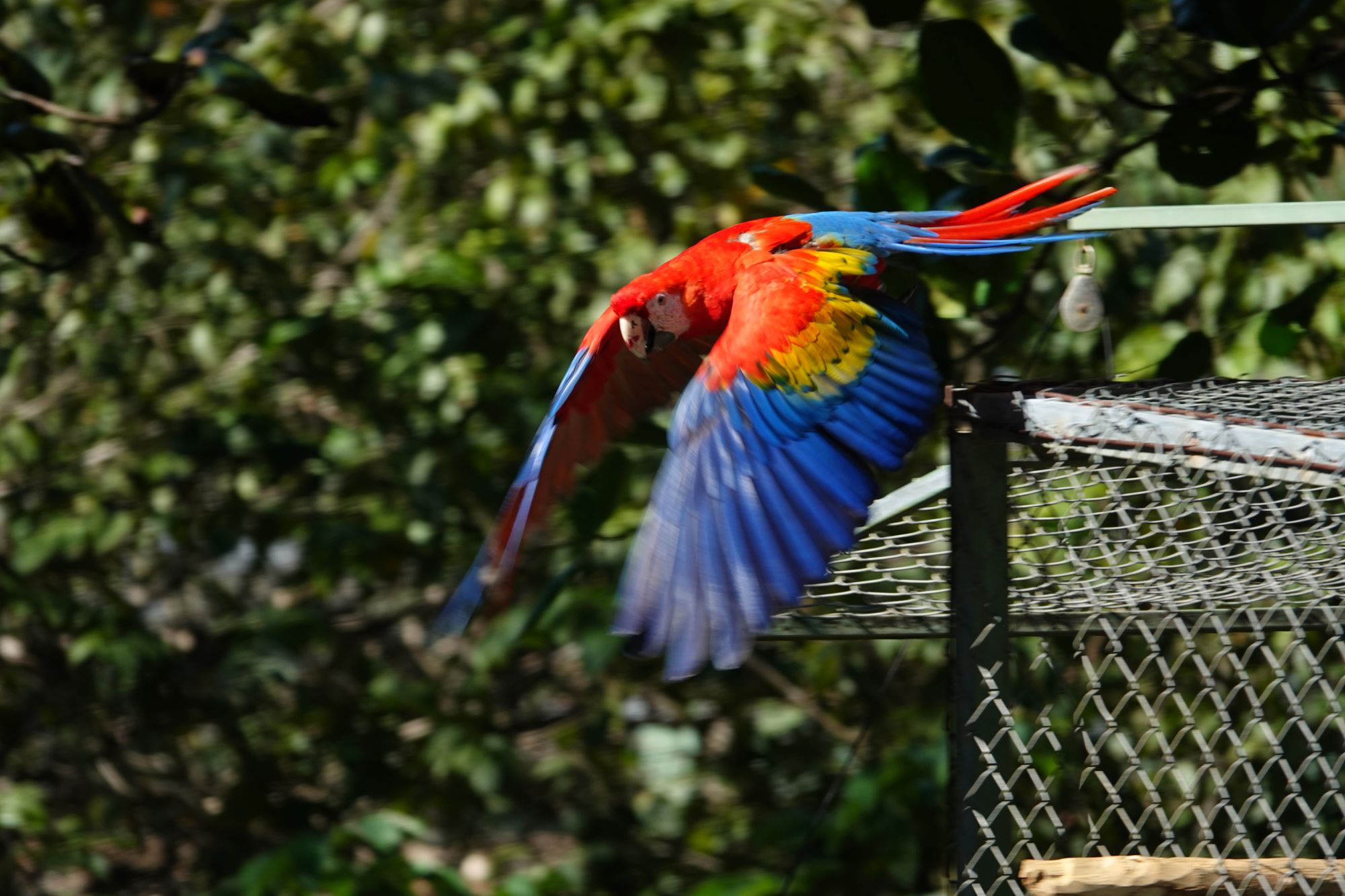

It’s been over a year since 14 Scarlet Macaws were released from the breeding center in Punta Islita. For several of these birds, like the adorable couple inspiring this blog, we know that they are enjoying the sunrise from the large Guanacaste by our wild bird feeders. For others, like Lola and Tookie, we see them less often these days and we are left wondering about their adventures. This is a good thing, as it means that they have fully embraced life in the wild and aren’t relying on us anymore. They have, quite literally, left the nest and are spreading their colorful wings along the Nicoya Peninsula. But this would be a short blog if we didn’t elaborate on what we do know about their adventures. So, without further ado, let’s revisit the love story of Mary Ann and Flybird.
Unlike the other birds released last year, this is not the first time Mary Ann has lived in the wild. You may remember that she hatched in the wild, in a dead palm tree in fact, to parents Scarface and Elvira. Dead palm trees are notoriously awful places to make a nest, and one heavy rain is all it took to knock it right over, with Mary Ann inside it
She was rescued by MRN’s team and brought to the breeding center, where she was raised the rest of the way by our diligent bird team. When she started flying, she moved in with the pre-release flock, anxiously awaiting her return home. She was released in 2018 with 12 other birds when she was a year old, but her return to the wild was short lived. An altercation with another bird left her with a hole in her beak and she was back with the bird team, just a day after her release. A devastating blow, to be sure, but they say everything happens for a reason. It turns out that this incident is what led her to her future love, Flybird.

Flybird’s origin is unknown. He was likely rescued from the pet trade, but we will never know for sure. What we do know is that he was the perfect companion to keep Mary Ann out of trouble. It was love at first sight for Mary Ann, or though Flybird needed some convincing (after all she was quite young for that level of commitment!). But her persistence in playing with him and roosting next to him at night eventually turned into pair-preening, and pair preening turned into kissing, and the rest is history. Strong bonds are common among macaws, but something about theirs feels unique. Mary Ann is bold and sassy, while Flybird is patient and calm (most of the time, anyways!). They balance each other out, and their love has grown as vibrant as their feathers.

Now, over a year since their release, the breeding center’s “it” couple is still together, and their bond is stronger than ever! When Mary Ann was returned to the breeding center after her first release, we were unsure how she would fare if she were to be released again. While she passed the criteria for release, she was not as strong a candidate as Flybird was, even though he had been in captivity longer. Our hope was that as her mate, Flybird would keep her close to him and out of harms way while she adjusted to life in the wild. He has done just that and as a result they have both spent a happy first year in the wild! They are regular visitors to our wild bird feeders, which is unsurprising given their long history at the center. However, they are also foraging for wild fruits, exploring the area, and enjoying the views of the habitat in which they belong.
Mary Ann has officially been wild for a year and a half, the longest she has ever been despite hatching there. Thank you to all our supporters and partners who helped her along in her redemption story!
P.S. This World Parrot Day you can help Great Green Macaws get to the wild too! Save the Date.

Carey Wentz
Communications Manager

